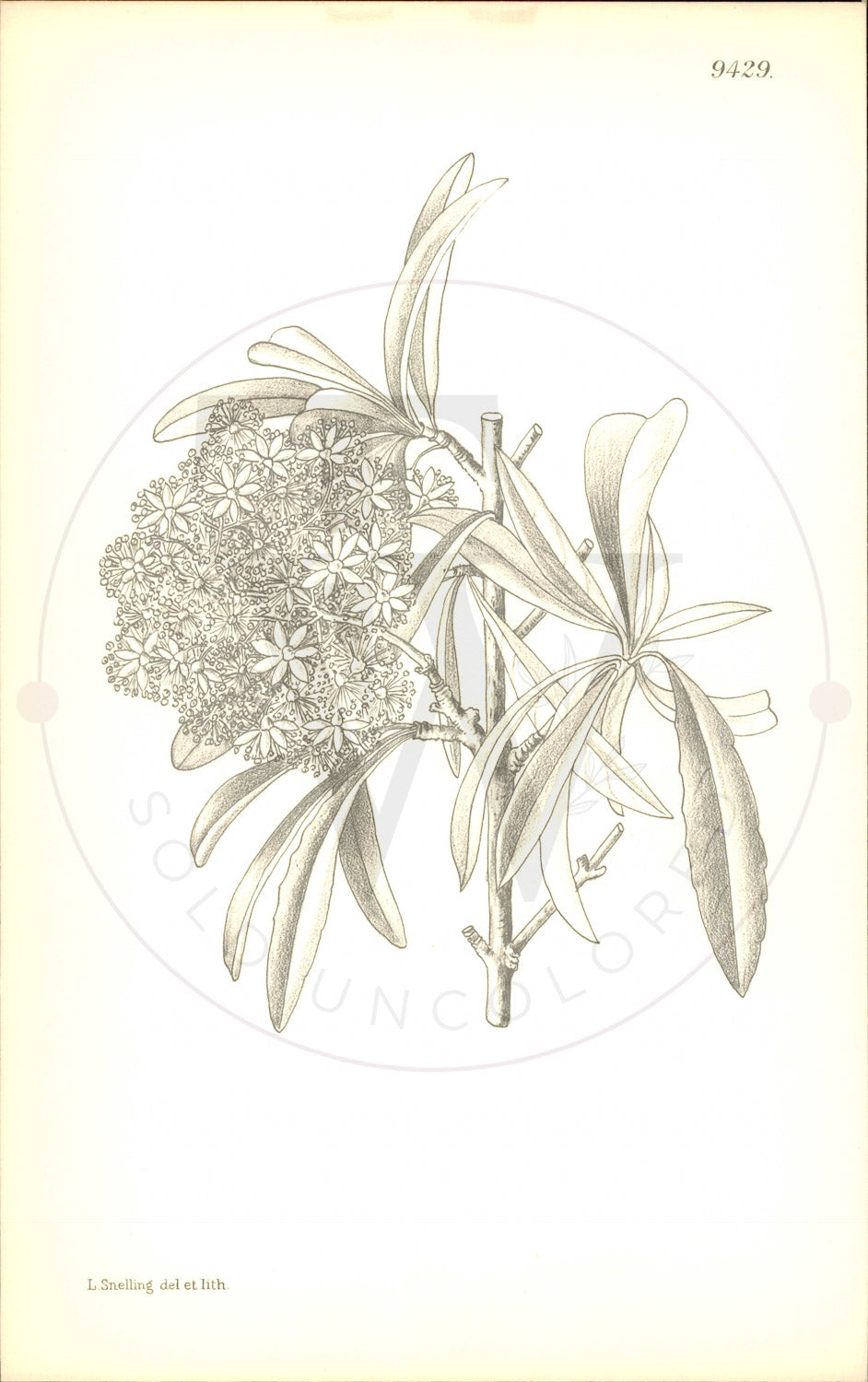Curtis Botanical Magazine
Plate 9429 - Decumaria sinensis
Plate 9429 - Decumaria sinensis
Couldn't load pickup availability
Curtis's Botanical Magazine - Plate 9429
Decumaria sinensis
Native Region: France • Publication Date: January 1st, 1934
Distribution: is also remarkable • Tab Author: J. R. SEALY
Botanical Description
Decumaria sinensis Oliver in Hook. Ic. Plant. XVIII. t. 1741 (1888); a caetera specie generis, D. barbara L., foliis minoribus obovatis oblanceolatis vel ellipticis obtusiusculis ad basem sensim angustatis differt.-Diels in Engl. Bot. Jahrb. XXIX. 377 (1901); Pampanini in Nuovo Giorn. Bot. Ital. N. Ser. XVII. 282 (1910) et Piante Vasc. Racc. Silvestri nell' Hu-peh, 64 (1911); Rehder in Sargent, Plant. Wilson. I. 152 (1912) et in Bailey, Stand. Cycl. Hort. II. 974 (1914) et Man. Cult. Trees & Shrubs, 297 (1927); Bean, Trees & Shrubs Hardy in Brit. Isles, Ed. 3, I. 479 (1921), III. 133 (1933); Hutchinson in Kew Bull. 1927, p. 104; Rehd. & Wils. in Journ. Arn. Arb. IX. 52 (1928); Engler in Engl. Nat. Pflanzenfam. Ed. 2, XVIII a. 210, fig. 120 (1930). Within the tribe Hydrangeeae the two genera Decumaria L. and Schizophragma Sieb. & Zucc. (syn. Pileostegia Hook. f. & Thoms.)* stand apart in having flowers with a single style, and fruits which are remarkable in that they open at the sides by the breaking away of the valves between the ribs. Moreover, they are soft woody plants climbing by means of aerial roots after the manner of the ivy. In the latter character they resemble certain species of Hydrangea L. -for example H. petiolaris Sieb. & Zucc. well-known in cultivation and figured at t. 6788 of this Magazine-the genus to which they are most closely allied, but from which they differ in their styles and fruits, Hydrangea having 4-5 styles, free or connate only at the base, and fruits which dehisce at the top between the styles. Decumaria is altogether a distinctive genus and differs by its flowers with 7-10 sepals and petals and 20-30 stamens from Schizophragma which has flowers with only 4-5 sepals and petals and 8-10 stamens. Of the latter genus S. hyd- rangeoides Sieb. & Zucc. t. 8520, S. integrifolia Oliver t. 8991, and S. (Pileostegia) viburnioides (Hook. f. & Thoms.) Stapf. t. 9262 are figured in this Magazine. Not only does Decumaria present a number of interesting morphological features, but its geographical distribution is also remarkable. Only two species of the genus are known; one, D. barbara L., occurs * See Stapf in Bot. Mag. t. 9262 (1932) for the reasons for treating the genus Pileostegia Hook. f. and Thoms. as a section of Schizophragma.
Synonyms
Pileostegia Hook.
f. & Thoms.)* stand apart in having flowers with a single
About This Print
Original black and white uncolored botanical print from Curtis's Botanical Magazine (established 1787). This 9000s series print is from unissued publisher stock, never hand-colored, representing the authentic plate as it appeared in the magazine. Edited by Sir Arthur William Hill for The Royal Horticultural Society, London.
Share



